Themed collection Theoretical chemistry developments: from electronic structure to simulations

Theoretical chemistry developments: from electronic structure to simulations
Theoretical chemistry – ranging from electronic structure theory to classical molecular dynamics or even coarse grained simulations – nowadays plays an eminent role in almost all branches of chemistry.
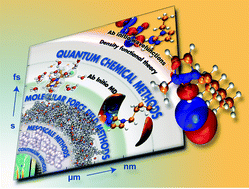
Phys. Chem. Chem. Phys., 2015,17, 14268-14269
https://doi.org/10.1039/C5CP90040A
Simulations of room temperature ionic liquids: from polarizable to coarse-grained force fields
This perspective article summarizes the recent advances in the classical molecular modelling of room temperature ionic liquids.
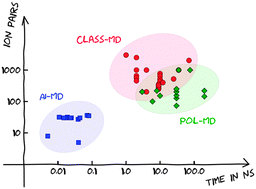
Phys. Chem. Chem. Phys., 2015,17, 14270-14279
https://doi.org/10.1039/C4CP05550K
Fully relativistic self-consistent field under a magnetic field
Four-component Dirac–Hartree–Fock method with gauge-including atomic orbitals.

Phys. Chem. Chem. Phys., 2015,17, 14280-14283
https://doi.org/10.1039/C4CP04027A
Singlet ground state actinide chemistry with geminals
We present the first application of the variationally orbital optimized antisymmetric product of 1-reference orbital geminals (vOO-AP1roG) method to singlet-state actinide chemistry.
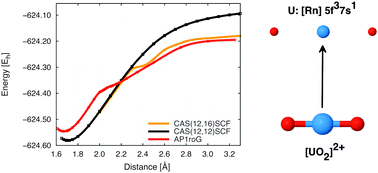
Phys. Chem. Chem. Phys., 2015,17, 14427-14436
https://doi.org/10.1039/C4CP05293E
Characterization of Znq+–imidazole (q = 0, 1, 2) organometallic complexes: DFT methods vs. standard and explicitly correlated post-Hartree–Fock methods
Benchmarking DFts for the characterization of the Znq+–imidazole (q = 0, 1, 2) complexes.
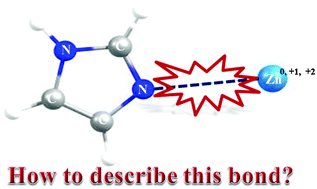
Phys. Chem. Chem. Phys., 2015,17, 14417-14426
https://doi.org/10.1039/C4CP06108J
Towards an ab initio description of the optical spectra of light-harvesting antennae: application to the CP29 complex of photosystem II
Only going beyond the static crystal picture through molecular dynamics simulations can a realistic excitonic picture of the light-harvesting complex CP29 be obtained using a multiscale polarizable QM/MM approach.
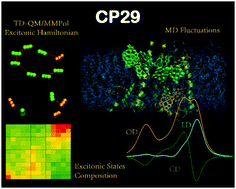
Phys. Chem. Chem. Phys., 2015,17, 14405-14416
https://doi.org/10.1039/C4CP05647G
Hydrogen bonding and π–π interactions in imidazolium-chloride ionic liquid clusters
The importance of 1° and 2° hydrogen-bonding and anion–π+ interactions for ionic liquid structuring.
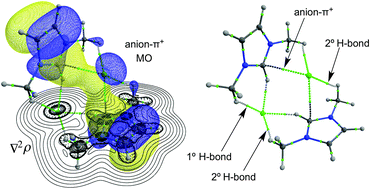
Phys. Chem. Chem. Phys., 2015,17, 14437-14453
https://doi.org/10.1039/C5CP00459D
Orbital entanglement and CASSCF analysis of the Ru–NO bond in a Ruthenium nitrosyl complex
Multiconfigurational wavefunction analysis and entanglement measures based on von Neumann entropy shed light on the electronic structure of a Ru nitrosyl complex, in particular on the Ru–NO bond.
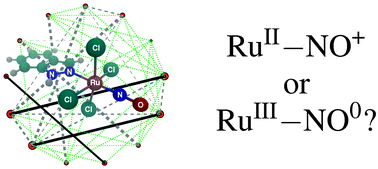
Phys. Chem. Chem. Phys., 2015,17, 14383-14392
https://doi.org/10.1039/C4CP05278A
How simple is too simple? Computational perspective on importance of second-shell environment for metal-ion selectivity
Factors determining metal-ion selectivity in peptidic sites were elucidated using the recently benchmarked DFT(BP86-D3//COSMO-RS) computational protocol.
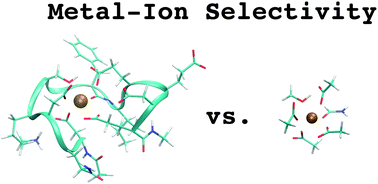
Phys. Chem. Chem. Phys., 2015,17, 14393-14404
https://doi.org/10.1039/C4CP04876H
“On-the-fly” coupled cluster path-integral molecular dynamics: impact of nuclear quantum effects on the protonated water dimer
“On-the-fly” coupled cluster-based path-integral molecular dynamics simulations predict that the effective potential of the protonated water–dimer has a single-well only.

Phys. Chem. Chem. Phys., 2015,17, 14355-14359
https://doi.org/10.1039/C4CP05192K
Spin decontamination of broken-symmetry density functional theory calculations: deeper insight and new formulations
This work proposes rigorous and physically based spin decontamination factors for broken-symmetry treatments of diradicals.

Phys. Chem. Chem. Phys., 2015,17, 14375-14382
https://doi.org/10.1039/C4CP05531D
Simulation of X-ray absorption spectra with orthogonality constrained density functional theory
Orthogonality constrained density functional theory is used to predict the near-edge X-ray absorption spectrum of adenine and thymine.
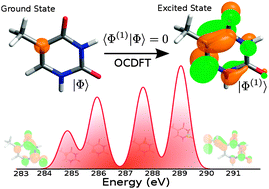
Phys. Chem. Chem. Phys., 2015,17, 14360-14374
https://doi.org/10.1039/C4CP05509H
Subsystem-DFT potential-energy curves for weakly interacting systems
Subsystem DFT for weakly interacting systems: good at reference geometries, but not necessarily good for potential-energy curves.
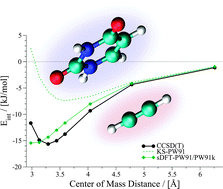
Phys. Chem. Chem. Phys., 2015,17, 14323-14341
https://doi.org/10.1039/C4CP04936E
Electronic couplings for molecular charge transfer: benchmarking CDFT, FODFT and FODFTB against high-level ab initio calculations. II
The accuracy of DFT-based approaches is assessed for calculation of electronic coupling matrix elements for molecular electron transfer. Benchmark ab initio calculations show that they give reliable results for a series of π-conjugated organic molecules, relevant to semiconducting organic materials.
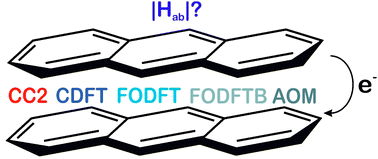
Phys. Chem. Chem. Phys., 2015,17, 14342-14354
https://doi.org/10.1039/C4CP04749D
Incremental evaluation of coupled cluster dipole polarizabilities
In this work we present the first implementation of the incremental scheme for coupled cluster linear-response frequency-dependent dipole polarizabilities.
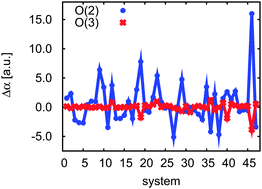
Phys. Chem. Chem. Phys., 2015,17, 14284-14296
https://doi.org/10.1039/C4CP05076B
Nitrogen electrochemically reduced to ammonia with hematite: density-functional insights
Licht et al. recently proposed a procedure to synthesize NH3 from N2 and steam electrolysis in molten hydroxide suspensions of nano-Fe2O3.
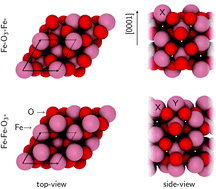
Phys. Chem. Chem. Phys., 2015,17, 14317-14322
https://doi.org/10.1039/C4CP04308A
Wetting of water on hexagonal boron nitride@Rh(111): a QM/MM model based on atomic charges derived for nano-structured substrates
The wettability of h-BN is modified by the formation of the nanomesh thanks to the modulation of the electrostatic potential.

Phys. Chem. Chem. Phys., 2015,17, 14307-14316
https://doi.org/10.1039/C4CP04638B
Comparing induced point-dipoles and Drude oscillators
This work compares the two major methods to introduce polarisability in Molecular Dynamics simulations: induced point-dipoles and Drude oscillators.
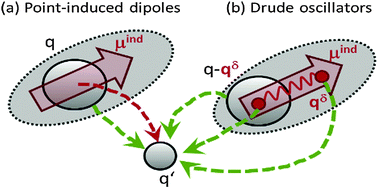
Phys. Chem. Chem. Phys., 2015,17, 14297-14306
https://doi.org/10.1039/C4CP04512B
About this collection
Theoretical chemistry, ranging from electronic structure theory to molecular dynamics simulations, has not only permeated irreversibly into the rest of chemistry as a reliable standard tool, but has also penetrated further into biology and physics in the form of computational chemistry. This issue will give an overview of several exciting developments which have appeared recently, or shall be presented in this issue. A particular focus of the issue is to give a voice to the younger researchers in the field, especially those shaping the emerging theoretical tools that will dominate the scene of quantum chemistry in the future.
The guest editors of the issue are Barbara Kirchner (University of Bonn) and Frank Neese (Max-Planck Institute for Chemical Energy Conversion).